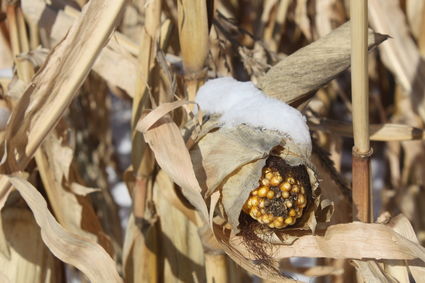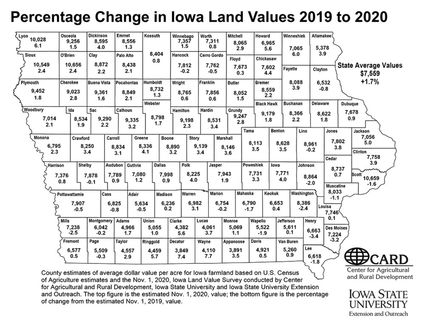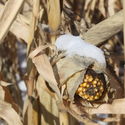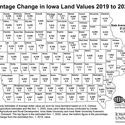Statewide farmland values increase in 2020
O'Brien, Clay counties see hikes
January 7, 2021

SENTINEL-NEWS FILE PHOTO
The annual Iowa State Land Value Survey released last month reported a 2.4 percent increase in O'Brien County farmland prices in 2020 and a 2.2 percent increase in Clay County.
Farmland values in O'Brien and Clay counties increased slightly over the past year due to more positive factors affecting the U.S. ag economy.
The annual Iowa State Land Value Survey released last month reported a 2.4 percent increase in O'Brien County farmland prices in 2020 and a 2.2 percent increase in Clay County. The report noted that lower interest rates, limited land supply and higher commodity prices as reasons for the 1.7 percent statewide increase in farmland values last year.
The statewide increase was slightly less than in 2019, when farmland values increased an average of 2.3 percent from the previous year. Iowa State University assistant professor of economics Dr. Wendong Zhang, who leads the survey, said respondents reported a variety of positive and negative factors affecting values over the past year. However, overall, respondents were "optimistic about the strength of the future land market."
"The recent increase is largely attributable to record-level federal ad hoc payments, drastic cuts in interest rates by the Federal Reserve, recent surges in agricultural exports and commodity prices, and limited land supply," he explained. "At the same time, the magnitude of this rise is still modest and represents an overall stable land market as opposed to one in rapid rebound. Many respondents still cited the uncertainty resulting from the COVID-19 pandemic, weather shocks such as the devastating derecho, and political and election uncertainty as negative factors influencing the land market."
In O'Brien County, the average price per acre increased from $10,411 in 2019 to $10,656 last year, while Clay County saw an increase from $8,684 to $8,872 during the same timeframe. The overall average in the 12-county Northwest Iowa Crop Reporting District was above the state median, netting a 2 percent increase in 2020.
If overall farm income factors remain on the up, Dr. Zhang predicted another increase over the coming year.
"Only time will tell how permanent these factors are, but long-term shifts in farm income will eventually be capitalized in future land values," he said.
The statewide increase was the third modest hike in the past six years. Prior to 2019, the last increase was in 2017 when the average value of an acre of farmland rose by an average of 2 percent to $7,326.
Though values have cooled off in recent years, they are more than 170 percent higher than they were in 2004. They peaked in 2012 in O'Brien and Clay counties when they reached $12,862 and $10,688 per acre, respectively.
Twenty-one of Iowa's 99 counties reported decreases or no change in land values in 2020, with the remaining 78 reporting higher values. For the eighth year in a row, Scott and Decatur counties reported the highest and lowest farmland values, respectively. Decatur County reported a value per acre of $3,849, a gain of $263, or about 7.4 percent, from last year's report. Scott County reported a value of $10,659, a decrease of $178 per acre, or about 1.6 percent.
The largest percentage increase, 7.7 percent, was reported in Wayne County. The largest dollar decrease was reported in Des Moines County, $241 per acre, while Lyon County saw the largest dollar increase, $577 per acre. The highest percentage decrease, 3.4 percent, was reported in Henry County.
Dr. Zhang said the price increase in traditionally lower-quality land in southern Iowa was driven by the pandemic. The South Central Crop Reporting District had the second-highest percentage increase in prices, 3.8 percent, in 2020.
"Strong demand for pasture and timber grounds, which are even more appealing now with social-distancing requirements, contributed to the rise in low-quality land value," said Zhang, also noting that when compared to high-quality land, it doesn't take a substantial change in the dollar value of low-quality land to constitute a large percent increase in values.









